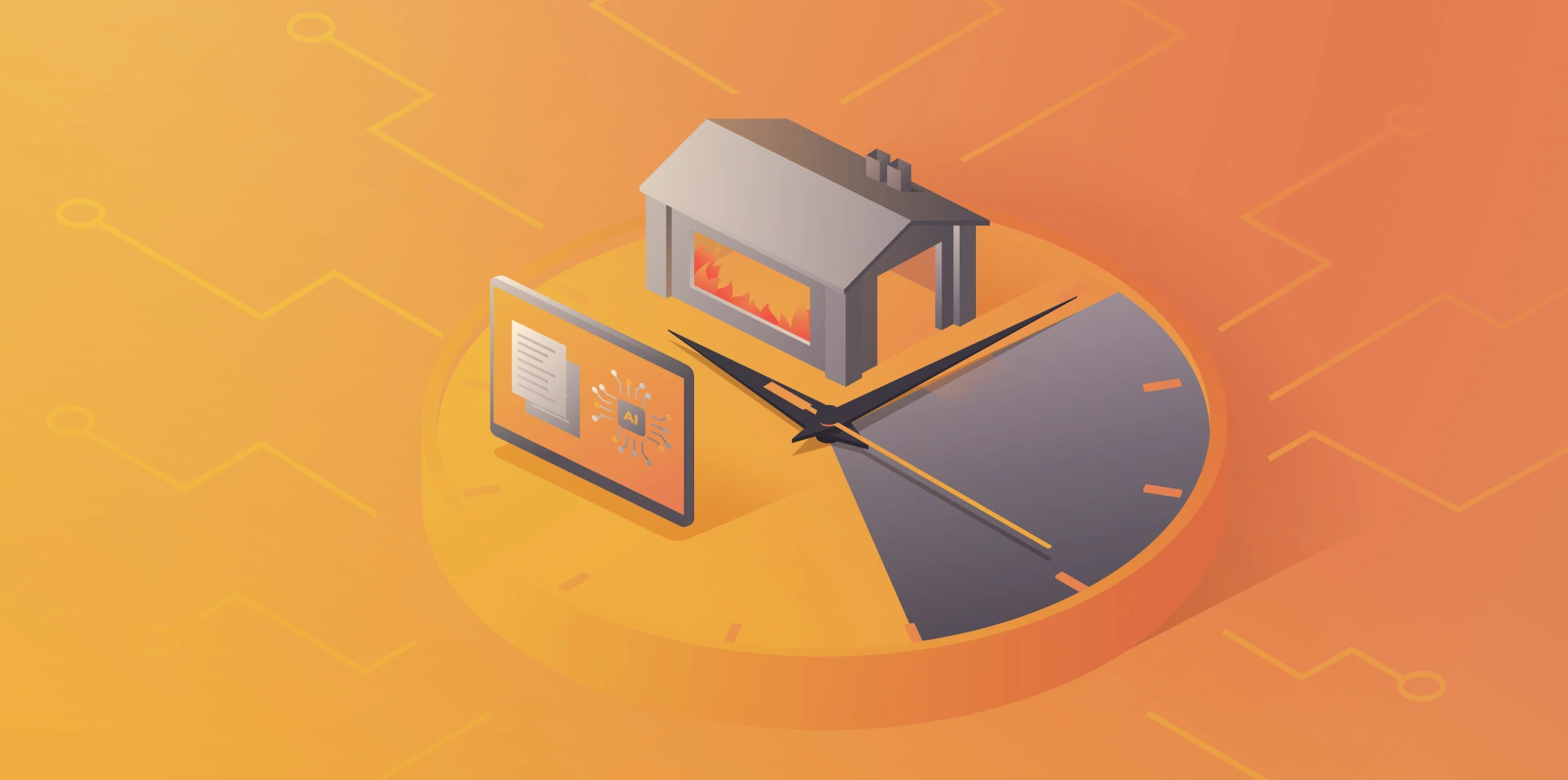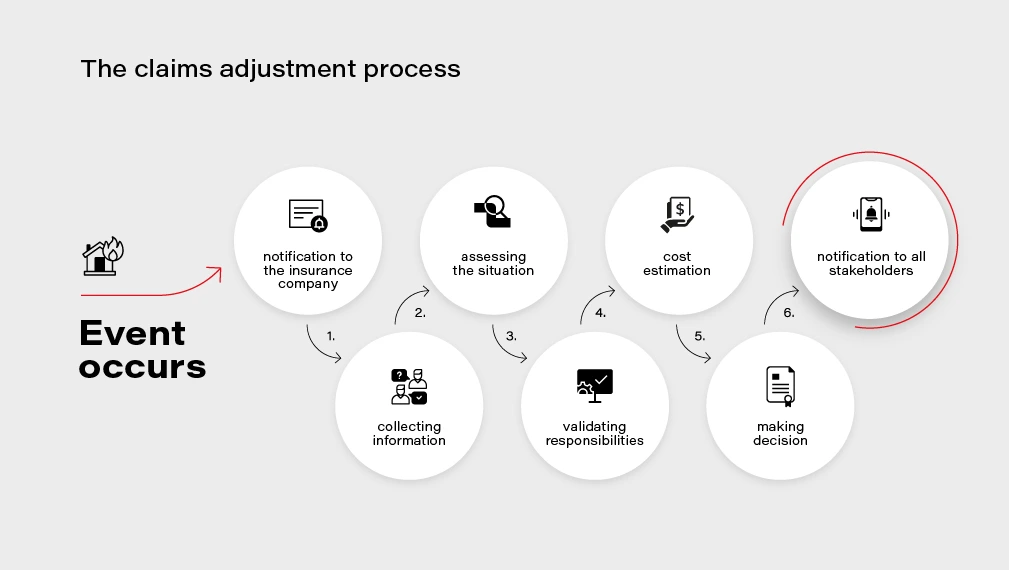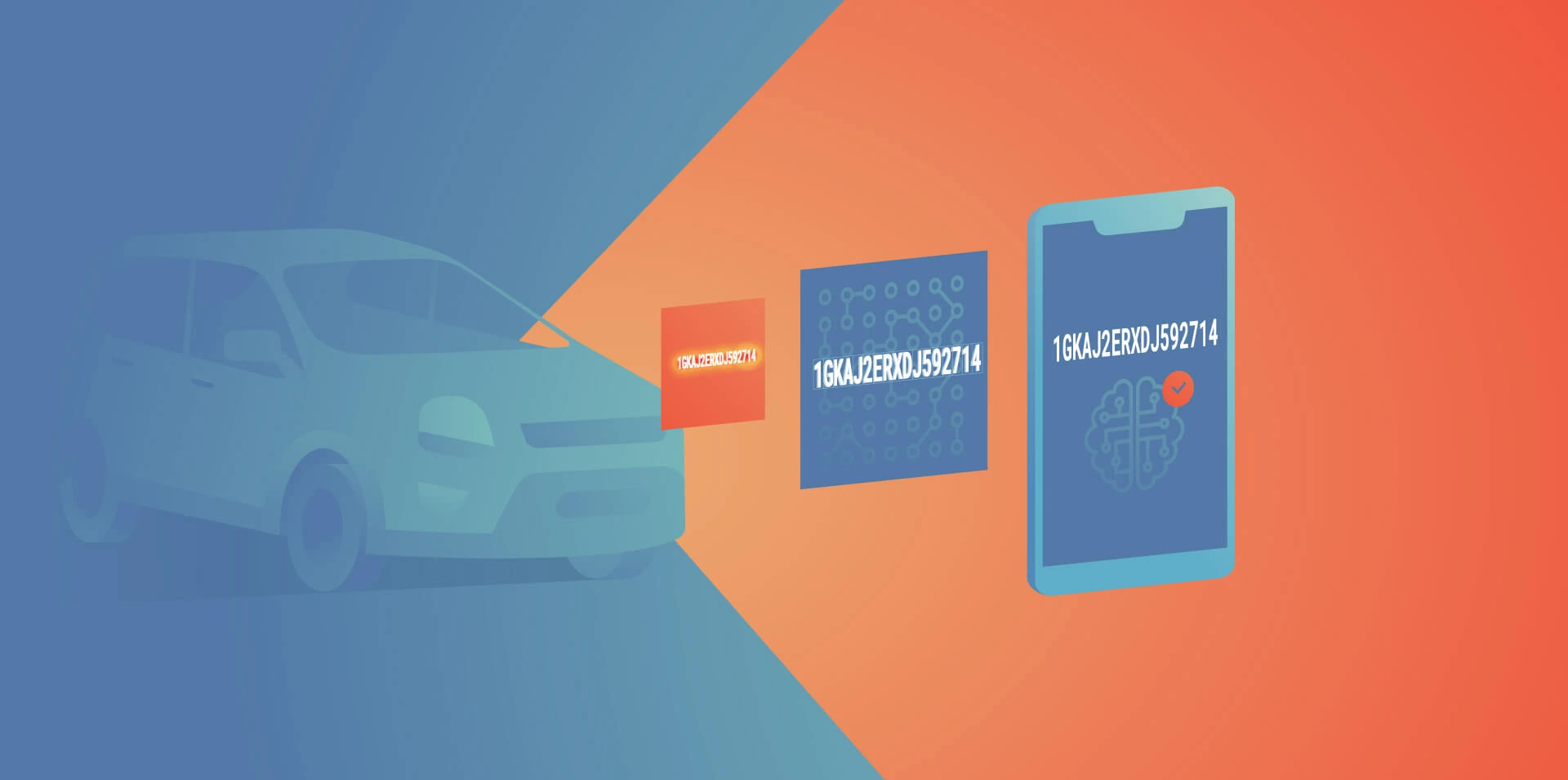How to Expedite Claims Adjustment by Using AI to Improve Virtual Inspection

If we look at the claims adjustment domain from a high-level perspective, we will surely notice it is a very complex set of elements: processes, data, activities, documents, systems, and many others, depending on each other. There are many people who are involved in the process and in many cases, they struggle with a lot of inefficiency in their daily work. This is exactly where AI comes to help. AI-based solutions and mechanisms can automate, simplify, and speed up many parts of the claims adjustment process, and eventually reduce overall adjustment costs.
The claims adjustment process
Let’s look at the claims adjustment process in more detail. There are multiple steps on the way: when an event that causes a loss for the customer occurs, the customer notifies the insurance company about the loss and files a claim. Then the company needs to gather all the information and documentation to understand the circumstances, assess the situation, and eventually be able to validate their responsibility and estimate the loss value. Finally, the decision needs to be made, and appropriate parties, including the customer, need to be notified about the result of the process.

At each step of this process, AI can not only introduce improvements and optimizations but also enable new possibilities and create additional value for the customer.
Let’s dive into a few examples of potential AI application to claims adjustment process in more detail.
Automated input management
The incoming correspondence related to claims is very often wrongly addressed. Statistics show that on average, 35% of messages is incorrectly addressed. A part of them is sent to a generic corporate inbox, next ones to wrong people, or sometimes even to entirely different departments. That causes a lot of confusion and requires time to reroute the message to the correct place.
AI can be very helpful in this scenario – an algorithm can analyze the subject and the content of the message, look for keywords such as claim ID, name of the customer, policy number, and automatically reroute the message to the correct recipient. Furthermore, the algorithm can analyze the context and detect if it is a new claim report or a missing attachment that should be added to an already-filed claim. Such a solution can significantly improve the effectiveness and speed up the process.
Automated processing of incoming claims
The automation of processing of incoming documents and messages could be taken one step further. What if we used an AI algorithm to analyze the content of the message? A claim report can be sent using an official form, but also as a plain email message or even as a scanned paper document – the solution could analyze the document and extract the key information about the claim so that it can be automatically added to the claim registry system. Simultaneously the algorithm could check if all the needed data, documents, and attachments are provided and if not, notify the reporter appropriately. In a “traditional” approach, this part is often manual and thus takes a lot of time. Introducing an AI-based mechanism here would drastically reduce the amount of manual work, especially in the case of well-defined and repeatable causes, e.g., car insurance claims.
Verification of reported damage
Appraisal of the filed claim and verification of reported damage is another lengthy step in the claim adjustment process. The adjuster needs to verify if the reported damage is true and if the reported case includes those that occurred previously. Computer vision techniques can be used here to automate and speed up the process – e.g., by analyzing pictures of the car taken by the customer after the accident or analyzing satellite or aerial photos of a house in case of property insurance.
Verification of incurred costs
AI-driven verification can also help identify fraudulent operations and recognize costs that are not related to the filed claim. In some cases, invoices presented for reimbursement include items or services which should not be there or which cost is calculated using too high rates. AI can help compare the presented invoices with estimated costs and indicate inflated rates or excess costs – in case of medical treatment or hospital stay. Similarly, the algorithm can verify whether the car repair costs are calculated correctly by analyzing the reported damage and comparing an average rate for corresponding repair services with the presented rate.
Such automated verification helps flag potentially fraudulent situations and saves adjuster’s time. letting them focus only on those unclear cases rather than analyze each one manually.
Accelerate online claims reporting with automated VIN recognition
In the current COVID-19 situation, digital services and products are becoming critical for all the industries. Providing policyholders with the capability to effectively use online channels and virtual services is essential for the insurance industry as well.
One of our customers wanted to speed up the processing of claims reported through their mobile application. The insurer faced a challenging issue, as 8% of claims reported through the mobile application were rejected due to the bad quality of VIN images. Adjusters had problems with deciphering the Vehicle Identification Number and had to request the same information from the customer. The whole process was unnecessarily prolonged and frustrating for the policyholder.
By introducing a custom machine learning model, trained specifically for VIN recognition instead of a generic cloud service, our customer increased VIN extraction accuracy from 60% to 90%, saving on average 1,5 h per day for each adjuster. Previously rejected claims can be now processed quicker and without asking policyholders for the information they already provided resulting in increased NPS and overall customer satisfaction.
Those are just a few examples of how AI can improve claims adjustments. If you would like to know more about leveraging AI technologies to help your enterprises improve your business, tell us about your challenges and we will jointly work on tackling them.
Check related articles
Read our blog and stay informed about the industry's latest trends and solutions.
see all articles

Leveraging AI To Improve VIN Recognition – How To Accelerate and Automate Operations in the Insurance Industry
Read the article




